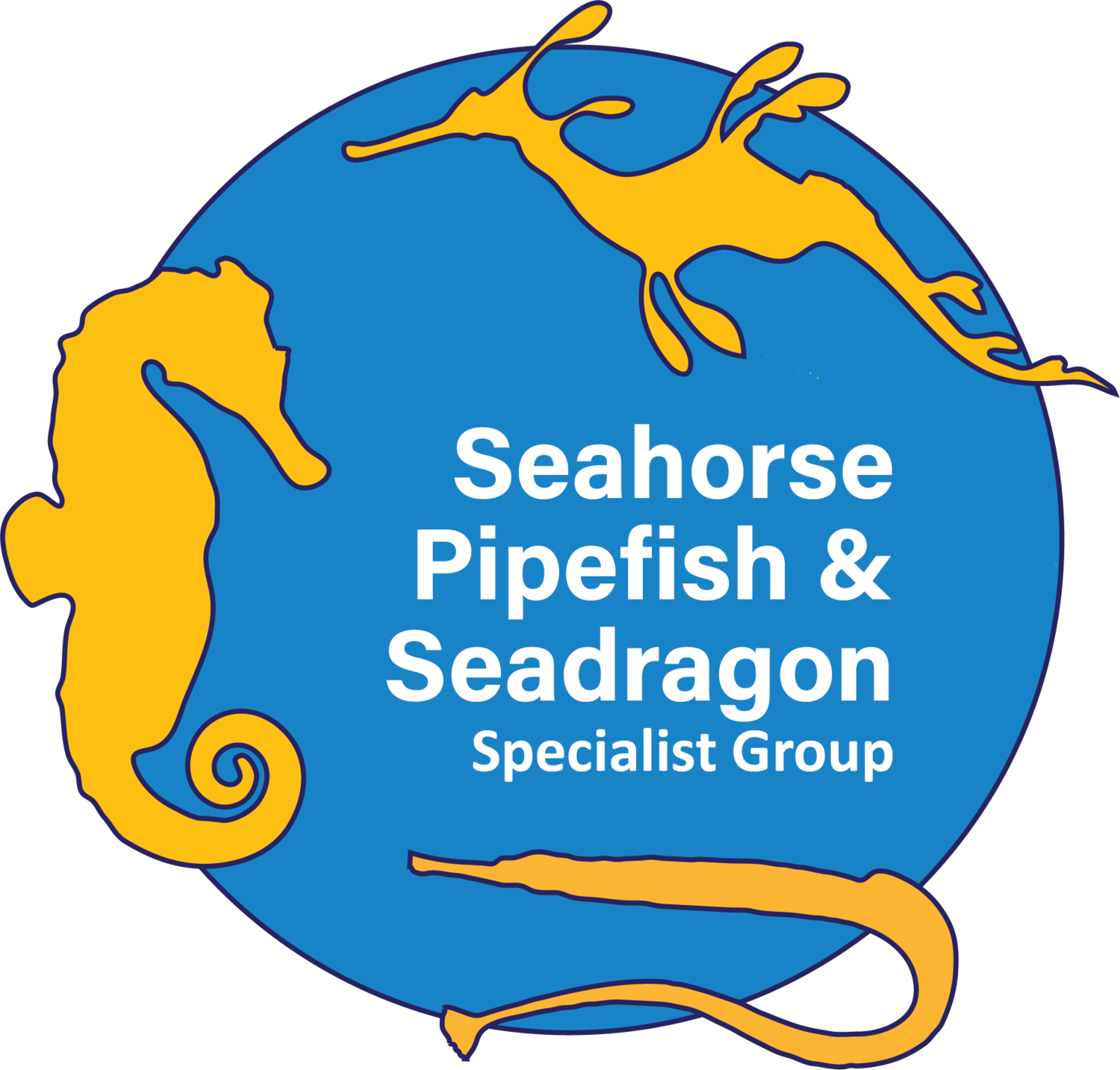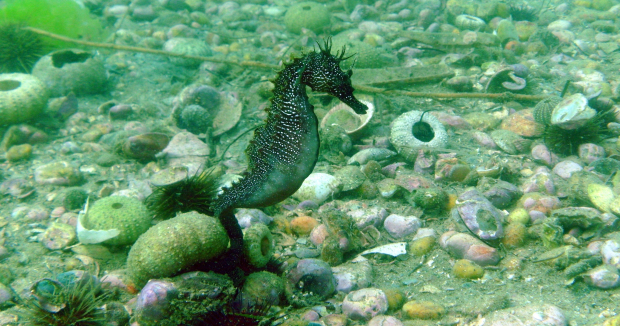Português | English
Seahorses in the Ria Formosa
Cavalos-Marinhos na Ria Formosa
Long-snouted seahorse, Hippcampus guttulatus, found in Ria Formosa. Photo by Miguel Correia/Project Seahorse
Portugal is home to many wonderful marine creatures, in particular the long-snouted seahorse and the short-snouted seahorse. These seahorses were found in record-breaking numbers in the Ria Formosa Natural Park in early 2000s. However, since then their numbers have been declining sharply.
Learn more about these quirky, magical creatures and what you can do to help them!
(Note that this is a living document and will be updated occasionally)
Learn more about seahorses in the Ria Formosa
Short-snouted seahorse (H. hippocampus). Photo by Rui Palma / Guylian Seahorses of the World.
Ten things you can do to help seahorses in the Ria Formosa
Seahorse species Identification Guide – East Atlantic
Map of global seahorse distribution
IUCN Red List of seahorses and pipefishes in the Mediterranean Sea
Key scientific papers about seahorses in Portugal
iSeahorse citizen science factsheet
Oceanário de Lisboa: Seahorses at risk in Ria Formosa (in Portuguese)
Important note: Please do not handle seahorses, and other wildlife, unless under the supervision of trained professionals.
Key scientific papers about seahorses in Portugal
Caldwell, I. R. & Vincent, A. C. J. 2012. Revisiting two sympatric European seahorse species: apparent decline in the absence of exploitation. Aquatic Conservation-Marine and Freshwater Ecosystems 22, 427-435.
Caldwell, I.R. and A.C.J. Vincent. 2013. A sedentary fish on the move: Effects of displacement on long-snouted seahorse (Hippocampus guttulatus Cuvier) movement and habitat use. Environmental Biology of Fishes 96(1): 67-75.
Correia, M., Palma, J., Koldewey, H. & Andrade, J. P. 2013. Can artificial holdfast units work as a habitat restoration tool for long-snouted seahorse (Hippocampus guttulatus Cuvier)? Journal of Experimental Marine Biology and Ecology 448, 258-264
Correia, M., Palma, J., Koldewey, H. & Andrade, J. P. 2014. The use of a non-invasive tool for capture-recapture studies on a seahorse Hippocampus guttulatus population. Journal of Fish Biology 84, 872-884.
Correia, M. 2015. Trends in seahorse abundance in the Ria Formosa, South Portugal: recent scenario and future prospects. p. 128 pp. Faro: Universidade do Algarve. DOI: 10.13140/RG.2.1.4740.1128
Correia, M., Koldewey, H., Andrade, J. P. & Palma, J. 2015. Effects of artificial holdfast units on seahorse density in the Ria Formosa lagoon, Portugal. Journal of Experimental Marine Biology and Ecology 471:1-7. doi.org/10.1016/j.jembe.2015.05.012
Correia, M., H.J. Koldewey, J.P. Andrade and J. Palma. 2016. A novel underwater visual census: Seahorse population survey as a case study. Regional Studies in Marine Science 8(3):454-458. doi.org/10.1016/j.rsma.2015.10.003
Correia, M., H. J. Koldewey, J.P. Andrade, E. Esteves & J. Palma. 2018. Identifying key environmental variables of two seahorse species (Hippocampus guttulatus and Hippocampus hippocampus) in the Ria Formosa lagoon, South Portugal. Environmental Biology of Fishes 101(9):1357-1367. doi.org/10.1007/s10641-018-0782-7
Curtis, J. M. R. & Vincent, A. C. J. 2006. Life history of an unusual marine fish: survival, growth and movement patterns of Hippocampus guttulatus Cuvier 1829. Journal of Fish Biology 68, 707-733.
Curtis, J. M. R. & Vincent, A. C. J. 2005. Distribution of sympatric seahorse species along a gradient of habitat complexity in a seagrass-dominated community. Marine Ecology-Progress Series 291, 81-91.
Foster, S. J. & Vincent, A. C. J. 2004. Life history and ecology of seahorses: implications for conservation and management. Journal of Fish Biology 65, 1-61.
Gristina, M., Cardone, F., Carlucci, R., Castellano, L., Passarelli, S. & Corriero, G. 2015. Abundance, distribution and habitat preference of Hippocampus guttulatus and
Hippocampus hippocampus in a semi-enclosed central Mediterranean marine area. Marine Ecology 36, 57-66.
Otero-Ferrer, F., Herrera, R., Tuset, V. M., Socorro, J. & Molina, L. 2015. Spatial and seasonal patterns of European short-snouted seahorse Hippocampus hippocampus distribution in island coastal environments. African Journal of Marine Science 37, 395-404.
Woodall, L. C., Otero-Ferrer, F., Correia, M., Curtis, J. M. R., Garrick-Maidment, N., Shaw, P. W. & Koldewey, H. J. 2018. A synthesis of European seahorse taxonomy, population structure, and habitat use as a basis for assessment, monitoring and conservation. Marine Biology 165, 1-19. doi.org/10.1007/s00227-017-3274-y
Project Team
Partner
[Page updated Nov 2018]





